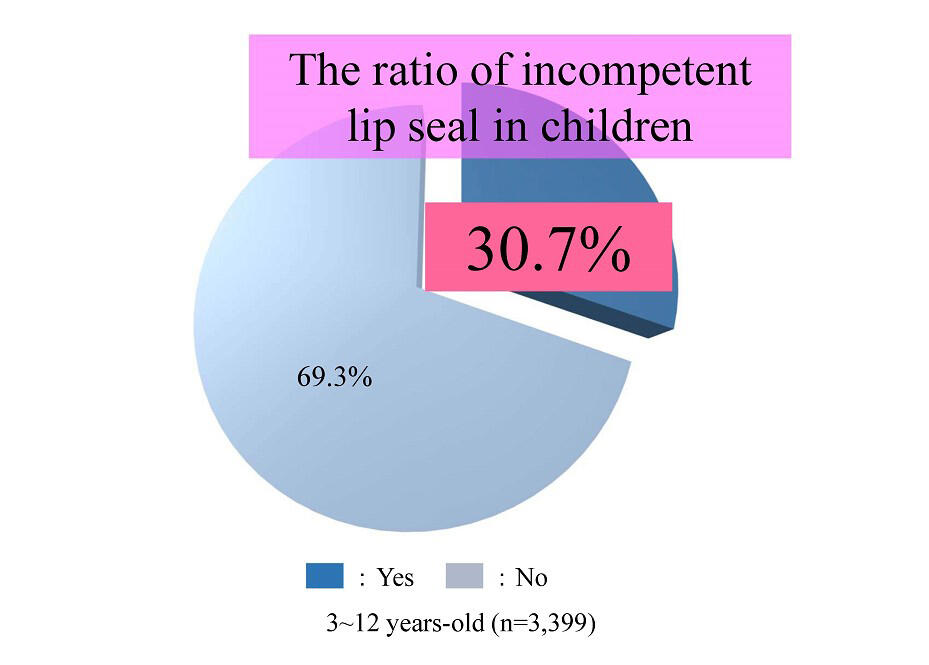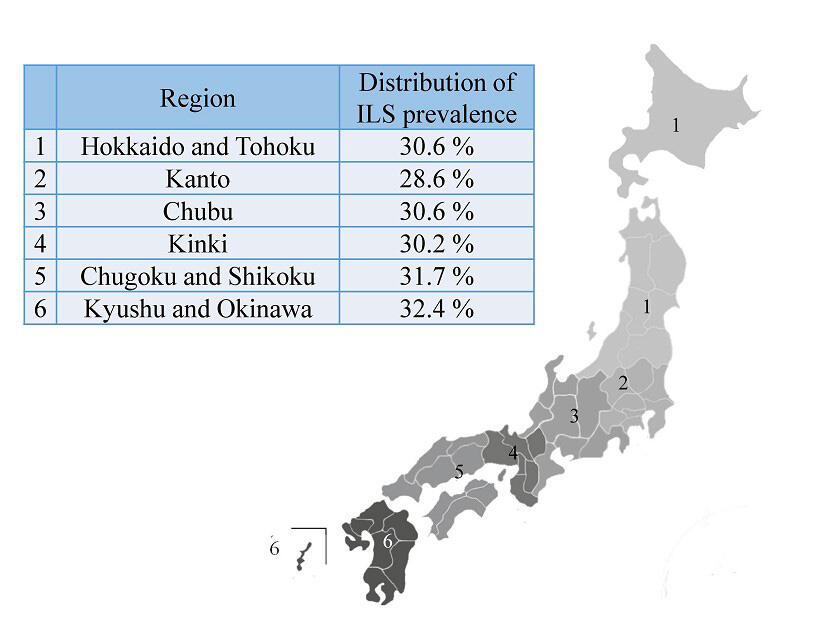Associate Professor Issei Saitoh of the Graduate School of Medical and Dental Sciences, Niigata University, Professor Yasutaka Kaihara of the Dental Hygiene Department, Ogaki Women's College, lecturer Emi Inada of the Graduate School of Medical and Dental Sciences, Kagoshima University, and their colleagues jointly carried out Japan's first large-scale, nationwide epidemiological survey of childhood incompetent lip seals (ILS), and announced that the results had made it clear that the prevalence of this condition is high, at 30.7%. It was found that the prevalence increases with age in children aged from three to 12, and that there is a significantly high correlation among 12 different subjects, including maxillofacial morphology and position, oral respiration, and allergic rhinitis. ILS is a condition in which the upper and lower lips do not completely close, and it may be doubtful that the condition will heal naturally. It is expected that these results will aid the healthy growth of children. The results were published in the international academic journal Environmental Health and Preventive Medicine.

If maxillofacial growth and development is hindered, imbalances occur in the mouth, facial bones, soft tissues such as muscles, occlusion, and teeth alignment during childhood. The morphology, functions, and position of the lips develop in close relation to each other, and as ways of speaking and person-to-person communication abilities develop alongside these, any imbalances lead to speech impairments, dysphagia, and oral habits, which can have a negative effect on children's health and development.
Prior to this, we knew that ILS is associated with the laxity and hypertonicity of the mimetic muscles of the lips and face, oral respiration, and an increase in the length of the lips and the length of the lower jaw underneath the nose. There are also reports that when the ability to close one's mouth weakens, the balance between the muscles around the mouth that surround the teeth and pressure from the tongue is destroyed, and teeth alignment worsens.
Previously, small-scale research has reported that the prevalence of ILS decreases with age. However, there had not been a large-scale survey in Japan that could assess its prevalence across the entire country.
Thus, with the cooperation of 66 dental hospitals across the country that specialize in pediatric dentistry, the research group carried out a survey of the guardians of patients aged three to 12 who are regularly examined, and analyzed the results. The survey was made up of 44 questions relating to patients' everyday health and their lifestyle habits, and 3,399 people responded.
Upon analyzing the survey results, it was found that the prevalence of ILS in children in Japan is as high as 30.7%, and that this increases with age between the ages of three and 12. There was no significant difference even when aggregating the results by region (Hokkaido, Tohoku, Kanto, Chubu, Kinki, Chugoku, Shikoku, Kyushu, Okinawa). There was also no significant difference based on gender.

Furthermore, among the 44 question fields, 12 fields had a significant correlation with ILS. There was a positive correlation with the following fields: "Does not close lips," "Sleeps with mouth open," "Mouth is often dry," "Teeth are visible between upper and lower lips," "Makes loud chewing noises when eating," "Nasal congestion while sleeping," "Protruding teeth," "Nasal congestion during the day," "Bad breath during the day," and "Bad breath in the morning." "Can close mouth for more than one minute" and "Can eat with mouth closed" had a negative correlation.
These correlating fields demonstrated the possibility that ILS is related to oral respiration and allergic rhinitis, etc., as well as maxillofacial morphology and position. The prevalence among adults is not yet known, but it is apparent that early intervention is effective, as once a way of eating is established there are difficulties in improving it.
In recent years, the importance of the healthy development of children's mouths has become clear. In April 2018, a diagnosis of "oral function development disorder" was approved, and since 2020, an examination of a child's ability to close their lips, which checks for ILS, has been covered by health insurance. If a guardian is concerned, they should consider discussing this with their family dentist or with a pediatric dental surgeon.
Saitoh stated, "By continuing basic and clinical research connected to oral functions in children in the future, we aim to establish effective improvement methods that will be incorporated into checkups, with particular attention paid to 'eating.' "
This article has been translated by JST with permission from The Science News Ltd.(https://sci-news.co.jp/). Unauthorized reproduction of the article and photographs is prohibited.




